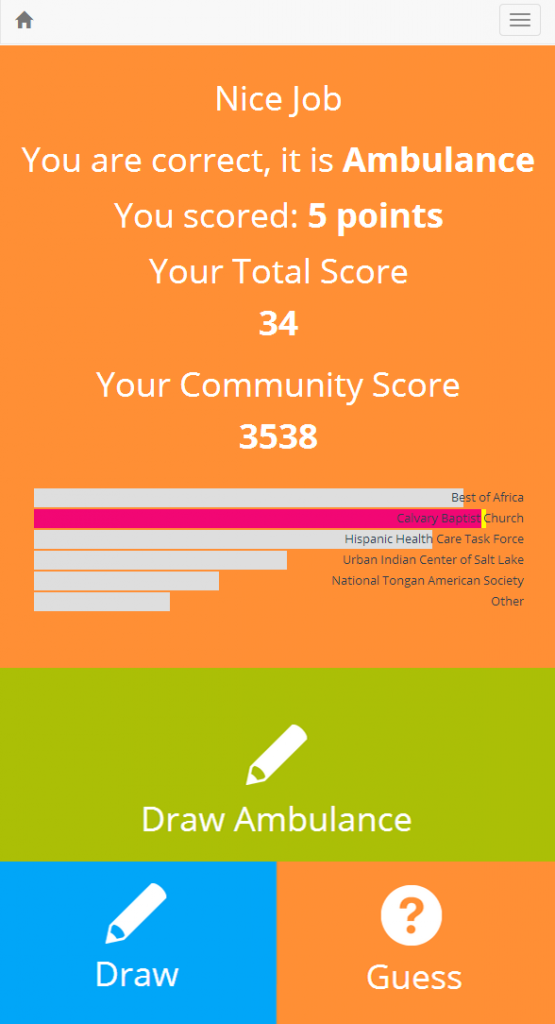Doodle Health is a browser-based research game that seeks to source community-specific medical iconography in a fun and engaging way. Kind of Words with Friends meets Draw Something with a medically-related pictures.

The game had to be usable by people regardless of cultural background, but it does assume a certain level of English fluency. The words and phrases were set to be no greater than a 4th grade reading level, and the general iconography of the game is a highly standardized and culturally neutral set. The interface of the game was designed to be welcoming, with a game-like feel. Bright colors and simple, blocked out sections of content made it easy to navigate with at maximum two clicks to get to main content. The entire game meets accessibility requirements for colorblind, vision, and hearing impaired users.
Playtesting with different groups on-campus and off-campus revealed some interesting results. For the most part, the drawing page was received well, with the exception of the word or phrase choice. After hearing from two different playtests sessions that some of the words were too difficult conceptually to draw, a word randomizer button was integrated to allow the user to scroll through a choice of up to three new words to draw. The choice was capped at three to prevent the user from cycling through until they came across a known word. If too many of the same words were being drawn, it would pollute the data gathered.
The next problem encountered was on the guessing screen. The library of guessable images included some of the professionally made icons the research team has been using in previous iterations of the project. We found that these icons were intimidating some of the users who were already self-conscious about their drawing skills. The solution to that was I included a tag in the corner of the images that said “professionally drawn†to indicate to the player that it was not a standard user who drew that image. This tested very well and the intimidation factor went away.
Doodle Health has been out in the wild for almost a year now, with the research team gathering over 5,000 valuable responses from several diverse communities in Utah.







